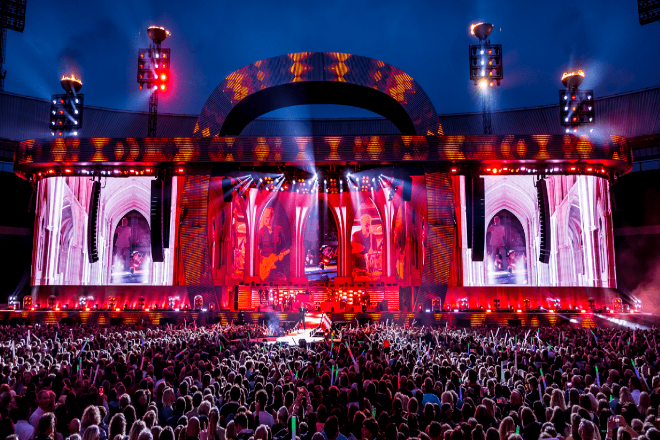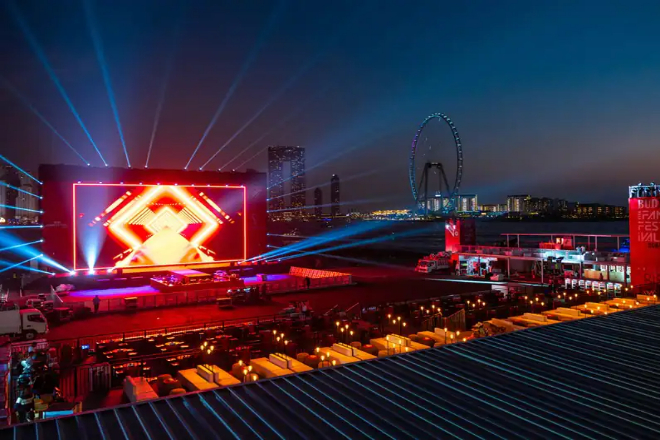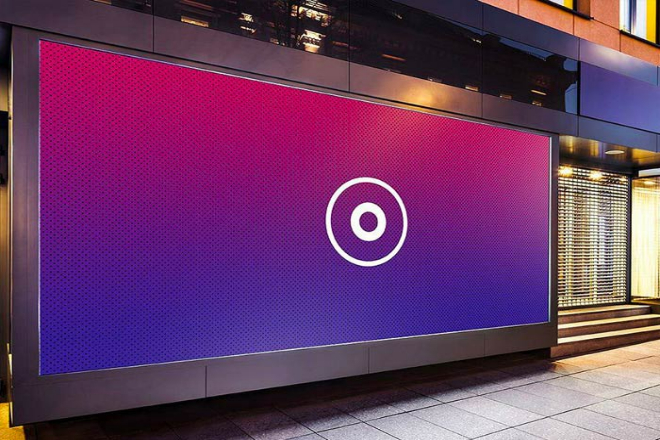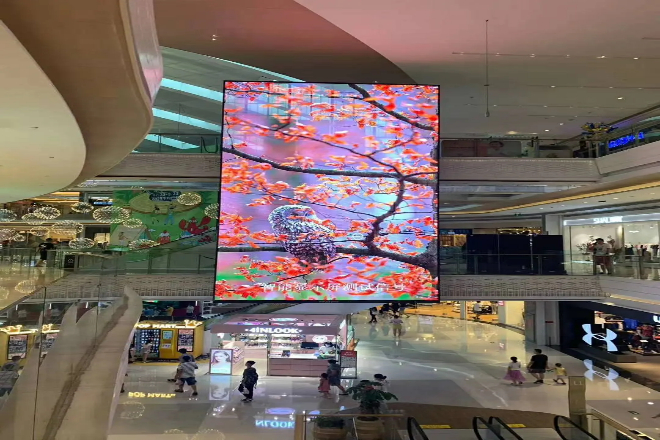介绍
1、LED显示屏重量与哪些因素有关?
说到重量,LED显示屏并不轻。它的重量与许多因素有关。例如,屏幕尺寸: 吨屏幕越大,用料越多,当然越重,像素间距也是一个因素。
像素间距越小,灯珠越密集,需要的支撑结构越复杂,重量也会增加。
箱子的材质也很重要,铁箱比铝箱重很多。 箱子结构的设计也会影响重量,有的箱子设计复杂,用料较多,自然就比较重。
安装方式也是需要考虑的,比如挂在墙上的会比放在地上的轻,因为放在地上的需要底座。
不要忘记辅助设备,例如 电源、控制设备等,这也会增加显示屏的重量。 所以在选择LED显示屏的时候,除了看它的显示效果之外,还要考虑它的重量,看安装位置是否能承受。
总的来说,选择LED显示屏要综合考虑很多因素,不仅要看是否好看,还要看是否实用。
2、LED显示屏的重量和安装位置有什么关系

1). 承重能力的考虑
1.1).不同安装位置承载力的差异
说到LED显示屏的安装,首先要说一下不同位置的承重能力,比如建筑物外墙的承重能力取决于其结构和材质。
如果是混凝土或者砖混结构的承重墙,那么强度很高,可以支撑很重的显示屏。但是如果是轻质隔墙或者玻璃幕墙,就得小心了,承重能力有限,无法安装很重的显示屏。
再说室内吊顶,这种吊顶主要是用来装饰和隐藏管线的,并不是用来承重的,所以它的承重能力一般都不是很强,如果要在上面安装显示屏,那就要看看吊顶能不能支撑住。
还有柱子。柱子的承载力取决于其材质、横截面积大小和高度。钢柱或混凝土柱非常坚固,安装显示屏很容易。但如果是木制或轻质金属柱,则必须称重。
1.2).LED显示屏重量对安装可行性的影响
显示屏的重量直接影响到它能否安装在某个位置。例如,如果显示屏在建筑物的外墙上太重,墙体可能支撑不住它,就得考虑加固它或者把它安装在其他位置。
室内的天花板也是一样,如果显示屏太重,天花板就有可能塌陷,不安全,所以在天花板上安装显示屏,一般要选择较轻的。
立柱上安装显示屏比较简单,因为立柱的承重能力一般都比较强,不过还是要看立柱能不能支撑显示屏的重量,如果不能,就需要加固。
2). 安装方式限制
2.1). 常见的LED显示屏安装方法
LED显示屏的安装方式其实有很多种,比如壁挂式,就是将显示屏直接挂在墙上,这种安装方式简单方便,适合室内或者半室外场所。
还有一种是挂式,就是用钢丝绳或者挂杆把显示屏挂起来,这种安装方式可以充分利用空间,看起来也很酷,不过必须保证挂架稳定,风吹的时候不会晃动。
嵌入安装也是很常见的,即将显示屏嵌入墙体或天花板中。这种安装方式看上去最简洁,但必须确保墙体或天花板能够支撑显示屏的重量。
2.2).重量对安装方式选择的影响
显示屏的重量直接影响到我们选择哪种安装方式,比如壁挂式显示屏太重的话,墙面可能支撑不住,那就得考虑其他的安装方式了。
至于吊装显示器,虽然可以支撑重要的显示器,但也要看吊装结构是否能支撑,如果吊装结构太弱,显示器可能会掉下来,这样不太好。
嵌入式安装需要更加小心,因为显示器必须嵌入墙体或天花板中,如果显示器太重,墙体或天花板可能会破裂。因此,选择嵌入式安装时,必须测量开孔尺寸,确保显示器可以稳定嵌入。
2.3). 不同安装方式的承重能力
不同的安装方式承重能力也不同,壁挂式一般适合安装较轻的显示屏;吸顶式可以支撑重要的显示屏;嵌入式则要看墙面或者天花板的强度。
因此,在选择安装方式的时候,一定要考虑显示屏的重量以及安装位置的承重能力。
3). 安全因素的考虑
3.1).重量对LED显示屏安装安全的重要性
在LED显示屏的安装中,安全是最重要的,显示屏的重量直接影响到安装的安全性,如果显示屏过重,安装结构可能会不稳定,甚至会掉落砸到人,所以在安装显示屏的时候,一定要考虑其重量对安装结构的影响。
3.2). LED显示屏过重或过轻可能带来的安全风险
如果显示器太重的话就会比较麻烦,安装结构可能支撑不住,导致显示器掉落。
万一砸到人或者东西就不好了,所以选择展示架的时候一定要看它的重量是否合适。
但是如果显示器太轻,也未必是件好事,因为太轻的显示器结构可能不稳定,只要有风吹过,或者有一点震动,就可能摇晃或者掉落。所以,在选择显示器的时候,除了看重量,也要看它的结构是否稳定。
一般来说,在选择LED显示屏和安装位置的时候,一定要考虑显示屏的重量和安装位置的承重能力,还要选择合适的安装方式,确保显示屏能够安装牢固,最重要的是安全第一!
3. 实际案例分析

1).迪拜BudX FIFA官方认证球迷观赛区
2022年卡塔尔世界杯期间,迪拜BudX被FIFA官方认证为球迷观赛区,为了提升观赛体验,这里安装了一块巨大的LED显示屏,屏幕点距仅为3.9mm,支持4K显示,可以清晰转播比赛。
该屏幕尺寸为23米(宽)×12.5米(高),虽然没有标明重量,但显然是重量级设备,其安装位置位于观赛区中央,可供大量球迷同时观看。
1.1).重量与安装位置关系:
考虑到观看区域的人流和观看体验,显示屏需要安装在稳定、醒目的位置。
安装团队可能进行了详细的结构分析和承重测试,以确保屏幕的重量不会对观看区域的结构产生任何影响。
此外,由于屏幕尺寸巨大,安装位置的选择也充分考虑了观众的视角和观看体验。
1.2).成功经验:
安装团队成功将如此巨大的LED显示屏安装在看台区域,为球迷提供了极佳的观赛体验,这与精准的结构分析和承重测试,以及专业的安装技术和设备密不可分。
1.3). 教训:
对于大型活动或比赛的临时LED显示屏安装,除了考虑重量、安装位置外,还要充分考虑设备的拆卸和运输。
同时,由于人流量大,还必须做好安全措施,防止发生安全事故。
4、LED显示屏重量及安装位置的优化建议

1).考虑重量与安装位置的匹配
在选择LED显示屏的时候,要充分考虑其重量与安装位置的匹配,不同的安装位置对显示屏的重量要求也不同。
例如建筑外墙、桥梁柱等承重结构较强的位置可以支撑较重的显示器,而室内天花板、轻质墙面等位置则需要较轻的显示器。
因此,在选购LED显示屏时,除了考虑其分辨率、亮度等性能指标外,还应重点考虑其重量,确保与安装位置的承重能力相匹配。
2). 不同安装位置的LED屏推荐重量
- 建筑外墙:
对于建筑外墙等承重结构较强的位置,可以选择较重的LED屏幕,但仍然需要保证不超过建筑结构的承重极限。
建议在结构设计时预留足够的承重空间,以便后续安装屏体。
- 桥柱:
桥梁立柱通常具有较高的承重能力,但考虑到风压、震动等因素,建议选择中等重量的LED屏,并采用稳定的安装方式,以保证在极端天气条件下屏幕保持稳定。
- 室内天花板:
室内天花板的承重能力相对较弱,因此应选择较轻的LED屏幕。
安装时应使用专业的吊顶安装件,吊顶结构与屏幕连接应牢固可靠。
- 轻质墙体:
对于承重能力较弱的位置,比如轻质墙体,尽量避免安装过重的LED屏幕,若确实需要安装,应先对墙体进行加固,提高其承重能力。
3).安装时的安全措施及注意事项
- 结构分析及承重测试:
在安装LED显示屏之前,应该对安装位置进行详细的结构分析和承重测试,确保其能够承受显示屏的重量。
若有必要,应邀请专业结构工程师进行现场评估。
- 专业安装团队:
选择具有丰富经验和专业资质的安装队伍进行安装,确保安装过程的安全可靠。
安装团队应熟悉LED显示屏的安装规范和要求,能够应对各种复杂的安装环境。
- 安全措施:
安装过程中应采取必要的安全措施,如设置安全围栏、佩戴安全防护用具等,防止安装过程中发生意外。
同时,施工现场应保持良好通风,避免有害气体对施工人员造成危害。
- 检查和维护:
安装完毕后应充分检查LED显示屏及其安装结构,确保其稳定可靠。使用过程中应定期维护和护理,及时发现和处理安全隐患。
结论
综上所述,LED显示屏的重量和其安装位置有着密切的联系,其重量不仅决定了显示屏在安装时的难度,还直接关系到其安全性和稳定性。
因此在选择和安装LED显示屏的时候,要充分考虑其重量与安装位置的兼容性,保证显示屏能够安全、稳定的运行。
最后,如果你想了解更多关于LED显示屏的信息, 请与我们联系。

